This month we celebrate black history month in three European countries: The UK, Ireland and the Netherlands. If you haven’t already read our articles on BHM in the UK and Ireland then be sure to check those out. And now let’s take a look at how the Dutch celebrate Black History Month!
History of BAM in the Netherlands
The Netherlands celebrates black history in October in what is known as ‘Black Achievement Month’ (BAM). The initiative was first established in 2015 by the Dutch artistic director and former John Leerdam in collaboration with the Dutch National Institute for the History of Slavery and Heritage (NiNsee).
Since then, BAM has become a nation-wide, annual event in which the Netherlands shine a spotlight on black talent and black history from around the world. Every year there are a range of events hosted across the Netherlands, showcasing black and Afro-descendant communities.
And without further ado, let’s take a deeper historical dive and explore eight interesting facts about black history in the Netherlands!
Dutch and the Transatlantic slave trade
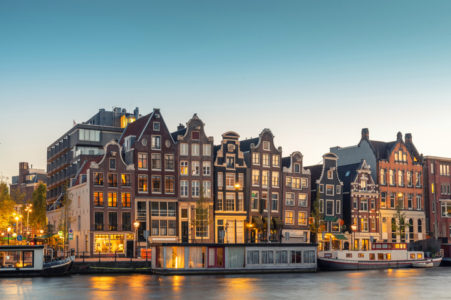
Historically, the Dutch were major participants in the Transatlantic slave trade. From the 17th to the 19th centuries, the Dutch were responsible for trafficking an estimated over half a million Africans. The Dutch trafficked Africans to Northern Brazil, and Spanish colonies in Latin America as well as Suriname, Guyana and the colonially-named ‘Gold Coast’ in Africa which we know today as Ghana.
The Trans-Atlantic Slave Trade brought untold wealth to the Netherlands, through the trade of sugar tobacco, cocoa, coffee, cotton and precious metals. In 1621 the Dutch West India Company was established, a chartered company of Dutch merchants which enjoyed a monopoly over the slave trade in Africa, Brazil, the Caribbean and North America.
The Golden Carriage
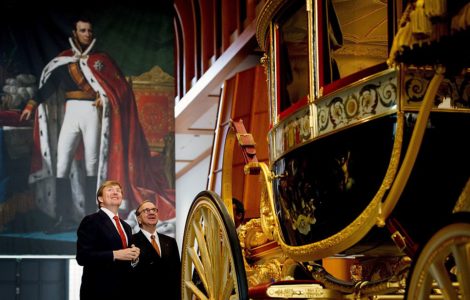
To this day the Dutch Royal family owns and uses a Golden carriage which was originally given as a gift from the city of Amsterdam to the then-monarch Queen Wilhelmina in 1898, 35 years after the Netherlands had abolished slavery. The carriage is controversial because
it features a painting depicting enslaved Africans bestowing gifts upon the Dutch colonizers.
Belanda Hitam
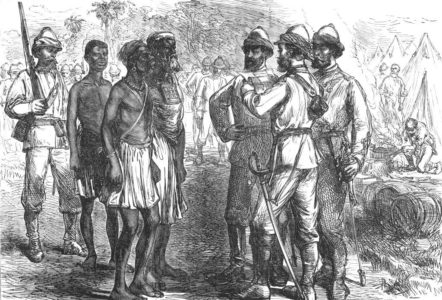
The Dutch also recruited Africans to fight in their colonial wars. They enlisted over 3,000 African Ashanti and Akan soldiers to fight as colonial troops in the Royal Netherlands East Indies Army from 1831 to 1872. These men, known as the Belanda Hitam (‘Black Dutchmen’ in Indonesian) were deployed to fight in Indonesia during the Java War.
As part of the negotiations between the Ashanti and the Dutch over recruitment to the Dutch East Indies Army, the Ashanti King Kwaki Dua Panin sent his son Kwasi Boachi and his nephew Kwame Poku to the Netherlands, where they studied mining engineering.
Rembrandt & the African diaspora in Amsterdam
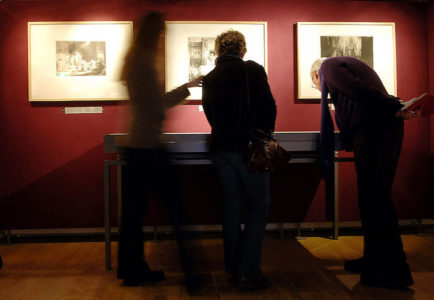
From the 17th century onwards, there is a noticeable Black presence in Dutch paintings, which reflected the migration of African people (both enslaved and free) to the Netherlands, in particular to Amsterdam.
One of the most famous examples is a portrait of two black men by the renowned Dutch artist Rembrandt. In early 2020, the Rembrandt House Museum in Amsterdam hosted an exhibition called ‘Black in Rembrandt’s Time’ which showcased people of African descent in 17th century Dutch art by a variety of artists.
Zwarte Piet

One of the most famous Dutch traditions is the controversial December tradition of Zwarte Piet, or Black Pete in English. Zwarte Piet is a character often depicted as the dark-skinned companion of Sinterklaas who is based on the historical figure Saint Nicholas. Zwarte Piet first appeared in a children’s book called ‘Saint Nicholas and his Servant’, published in 1850 by the Dutch schoolteacher, Jan Schenkman.
Every year on the December 5, it is a Dutch tradition to celebrate the Feast of St. Nicholas, where children are given sweets and gifts. It is common at the St Nicholas parade to see participants dressed as Zwarte Piet, in blackface with curly Afro wigs, hooped earrings and painted red lips.
Those who campaign against the tradition argue that it is a blatant portrayal of blackface, historically popularized by the minstrel and vaudeville movements. Prominent anti-Zwarte Piet campaigners include Quinsy Gario and Jerry Afriyie. Those who defend the tradition argue that Zwarte Piet is not a caricature of a black person, his face is black from soot as he climbs down chimneys distributing gifts. Tensions between pro and anti Zwarte Piet campaigners have escalated over the years, and even exploded into violent clashes.
In recent years there has been a gradual move to portray Zwarte Piet as sooty faced rather than in full blackface, and reinvent him as Chimney Pete rather than Black Pete, as a compromise between tradition and avoiding the taboo of blackface.
Afro-Dutch heroes
Two historical figures of particular note are the activists and World War II resistance fighters Anton de Kom and Boy Ecury. Anton de Kom was a Surinamese-born author who, during the second world-war, wrote for an underground communist newspaper about the terror of right-wing extremist groups in the Netherlands. Boy Ecury, born in Aruba, was part of an underground resistance group that carried out sabotage operations against the Germans and assisted injured Allied troops. Both men died in Dutch concentration camps; Anton de Kom passed away from tuberculosis and Boy Ecury was executed by firing squad aged twenty-two.
NiNsee and statue
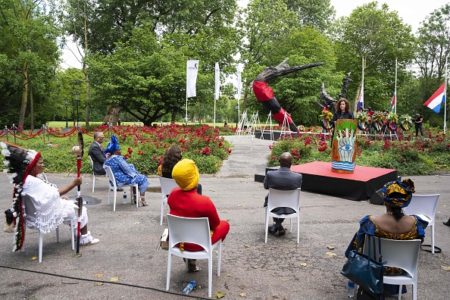
One significant milestone in black Dutch history came in 2002 when the National Institute for the Study of Dutch Slavery and its Legacy was created, also known as NiNsee. The institute works to bring the country’s discourse of racism, slavery and post-colonialism to the forefront.
In 2002, the same year that NiNsee was established, the Dutch monarch Queen Beatrix unveiled the National Monument of Slavery Past, in commemoration of the abolition of slavery in the Netherlands on July 1st 1863. The three-part monument was designed by Erwin de Vries, a Surinamese artist, and is located in Oosterpark in Amsterdam. The three parts depict the past, present and future of slavery.
Black History Tours in the Netherlands
Finally, if you are visiting Amsterdam and interested in taking a black history tour, be sure to check out Black Heritage Tours founded by the academic Jennifer Tosch.
